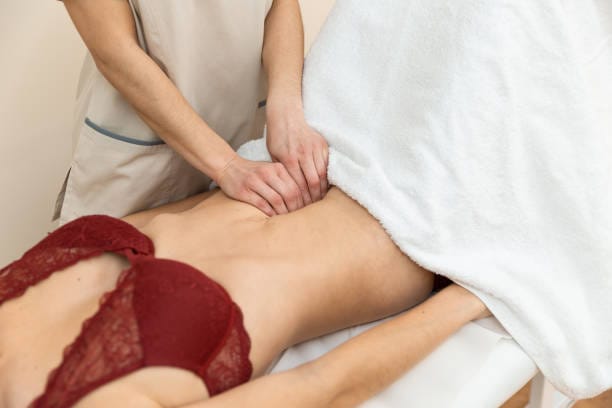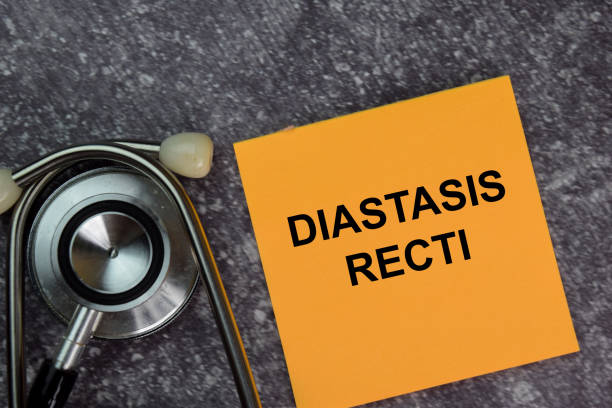- Home
- Blogs
- Post Pregnancy
- Abdominal Separation (Diastasis Recti): Symptoms & Treatment
- Abdominal Se...
Abdominal Separation (Diastasis Recti): Symptoms & Treatment

If you've just had a baby, you might be impatient to get back in shape and feel yourself again. However, the post-pregnancy journey is not as easy as it might seem to be. There are several issues that need your attention but one of the most stubborn and visible ones is the separation of abdominal muscles or diastasis recti.
If you are suffering from abdominal muscle separation after pregnancy, then you have come to the right place. You will find all the necessary information here, right from symptoms to treatment. So, sit tight and let’s get started without further delay.
What is diastasis recti?
The rectus abdominis, sometimes known as the "six-pack" muscles, which meet at the midline of your stomach, can get split in half or completely. This condition is known as diastasis recti.
A lot of women (almost 60 per cent) experience diastasis recti during and after pregnancy. This is due to the uterus stretching the abdominal muscles to make room for your developing baby.
Additionally, years or even months after giving birth, this separation may cause a person's tummy to expand or swell. And the gap is quite noticeable, as a result, it also affects the confidence levels of many women. However, particular workouts and precautionary methods can aid in bridging the gap so it can be healed.
Diastasis Recti Symptoms
Most women don’t realise that they are suffering from diastasis recti until postpartum. However, it will be difficult to tell if you have an abdominal separation initially as your entire abdomen is stretched.
So, here is a list of symptoms that you might experience if you have diastasis recti:
- The feeling of jelly or softness around your abdominal button
- Constipation
- Experiencing abdominal weakness
- Coning when you contract your abdominal muscles
- Difficulty moving, lifting, or carrying out routine duties
- A sore back
- Distorted posture
- Urine drips when you cough or sneeze
- Pain when having sex
- Hip or pelvic pain

Best Ways to Heal or Improve Diastasis Recti
Healing and improving diastasis recti is possible and requires just a little bit of determination and precaution. Here are a few things that will help you in healing your abdominal separation quickly, have a look-
- Make yoga and exercises a part of your routine
The three major sets of abdominal muscles are the rectus abdominis, transversus abdominis (TVA), and obliques. If you can concentrate on developing your TVA and obliques, you can reduce the strain on your rectus and help the diastasis to heal.
And strengthening these two muscle groups is only possible through regular exercise and yoga. Yoga asanas like bird dog, Vasisthasana, and Kumbhakasana are really helpful in this case.
- Be wise with exercises
You must avoid all traditional abdominal workout exercises like crunches if you want to get rid of diastasis recti. The right exercises can heal your diastasis and the wrong ones can cause further damage.
The damage is because of the pressure these exercises place on the interior abdominal muscles, which causes them to bulge further. Therefore, before performing any strengthening exercise for interior muscles, the exterior muscles must be repaired.
So, it is necessary to be careful with the exercises if you don’t want the situation to worsen. Also, to avoid this, it is better to employ a qualified instructor or sign up for a comprehensive postpartum care plan.
- Eat healthily
You will be doing a lot of exercise and yoga on a regular basis which means that you’ll need more energy. As a result, a healthy post-pregnancy diet plan will help you meet your increased body requirements.
Additionally, you can also keep a check on your calorie intake by religiously sticking to a diet plan.
- Avoid lifting heavy weights
Lifting anything heavier than your baby is not advisable if you are suffering from abdominal muscle separation. Why? Because lifting heavy loads puts a lot of pressure on your exterior and internal obliques, transversus abdominis, rectus abdominis, and pyramidalis muscle. Hence, lifting heavy loads will worsen your diastasis.
- Maintain a proper posture
Your postural alignment has a major impact on how your core muscles engage and how quickly they heal post-pregnancy. Hence, regardless of what you are doing, your primary attention should be on maintaining a posture and appropriately balancing your weight.
There are alignment modifications as well, which benefit your core muscles biomechanically. More time spent in these positions could hasten the recovery of your abdominal separation.
- Contacting a healthcare expert
Diastasis recti, if not treated properly, can linger on for months and even years. It will affect the way you look at yourself and might even become one of the reasons for a lack of confidence. Hence, we will advise you to consult an expert or a doctor before trying to heal it on your own.

Frequently Asked Questions
You must have a fair idea about abdominal separation by now. However, if you still have some questions in your mind, we hope that you’ll find answers here.
We have briefly answered a few of the most popular questions related to diastasis recti, have a look-
Is diastasis recti painful?
Diastasis recti don't hurt. Although some of the diastasis's side effects may cause pain, the ab separation itself is painless.
How long will my diastasis recti take to heal?
The time your diastasis will take to heal is directly proportional to the gap that exists and the amount of effort you’re putting into your strengthening exercises.
How to heal diastasis recti fast?
Healing diastasis recti fast is possible but for that, you will have to work really hard. The more your gap is, the more consistent in strengthening exercises you will have to be.
How much time do I have to fix my diastasis?
It is never too late to heal your diastasis recti. So, calm down, you are not running on a deadline. Just stay consistent with exercises, and you will be able to heal it soon.
Summing Up
Now that you have read everything about diastasis recti in great detail, you must know that it is treatable. All you need is patience, consistency and dedication and you are good to go.
Also, check Newmi’s post-pregnancy care plans and enrol to get the best results.
Leave a Comment
Blogs
Popular Posts
Get the latest from Newmi
Subscribe to get Email Updates!
Thanks for subscribe.
Your response has been recorded.
COPYRIGHT © 2023 KA HEALTHCARE PVT LTD - ALL RIGHTS RESERVED.
Disclaimer: NEWMI CARE does not cater to any medical/Pregnancy or psychiatric emergencies. If you are in a life-threatening situation, please do NOT use this site. If you are feeling suicidal, we recommend you call a suicide prevention helpline or go to your nearest hospital.

0 Comment